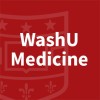
Obesity and Pediatric Multiple Sclerosis
Multiple SclerosisObesity is one possible contributor to severity of multiple sclerosis and progression of the disease. We already know that obesity is a risk determinant for acquiring MS, yet the impact of obesity on pediatric MS disease expression and course is unknown. This study will evaluate the relationship between obesity, obesity-derived inflammatory mediators, and imaging metrics of MS severity in children. Understanding how childhood obesity contributes to MS severity/progression may yield fundamental insights into disease pathobiology - which may thereby lead to effective strategies for halting its progression in its earliest stages.

Obesogenic Origins of Maternal and Child Metabolic Health Involving Dolutegravir
HIVObesity4 moreA total of 1900 pregnant women in the 1st trimester and their children will be enrolled and followed for two years (ORCHID study main cohort). As part of this, mother-infant pairs will be required to attend up to 10 study visits separate from routine clinic visits, these visits include 3 antenatal visits (less than or equal to 18, 24-28 and 32-36 weeks) and 7 postnatal visits (<2 and 6 weeks, 3, 6, 12, 18 and 24 months). Measurements in mothers will include demographics and health status, HIV disease and ART use, intercurrent medical history including concomitant medication use, HIV viral load testing, ART adherence, HIV antibody testing in women without HIV; body composition, caloric intake, dysglycemia and insulin resistance (IR), lipid profiles, anthropometry, resting energy expenditure, hepatic steatosis, specimen collection (whole blood, plasma, serum, urine, placenta and breastmilk), systemic and adipose inflammation, as well as metabolites, lipid subspecies and eicosanoids. Measurements in infants will include uterine gestational age and fetal growth, as well as metabolites, lipid subspecies and eicosanoids, body composition, dysglycemia and IR, lipid profiles, anthropometry, feeding, specimen collection (cord blood, whole blood, plasma and serum) and intercurrent medical history including concomitant medication use. Additional data on maternal health in pregnancy and birth outcomes will be abstracted from medical records.

Community Active and Healthy Families
ObesityChildhoodTo address childhood overweight disparities among Latino children in immigrant families a pilot trial of a community-based obesity treatment program, Community Active and Healthy Families (AHF), among 5-12 year old overweight and obese Latino children in immigrant families using pre/post design will be conducted. The hypothesis is that children participating in Community-AHF will demonstrate a reduction in child body mass index as measured by %BMIp95 (primary outcome) and improved diet physical activity behaviors (secondary outcomes) at intervention completion compared with pre-intervention

Safety and Efficacy of Sodium Pentaborate Pentahydrate in People With Overweight and Obesity
Overweight and ObesityThis study investigates the safety and efficacy of sodium pentaborate pentahydrate in improving the body weight and glycemic profile of patients with overweight or obesity compared to the placebo group.

ADI-PEG20, Obesity and Prediabetes
ObesityPreDiabetesTh purpose of this study is to determine whether ADI-PEG20 (PEGylated arginine deiminase), an arginine catabolizing enzyme preparation, improves insulin sensitivity, mitochondrial respiration, and energy utilization in adolescents with prediabetes.

Trial of the Combination of Alpha-Lipoic Acid and Mirabegron in Women and in Men With Obesity
Insulin ResistanceObesityBackground: Obesity and related illnesses cause at least 2.8 million deaths each year worldwide. Few treatments exist for obesity that are safe and widely available. A study drug (mirabegron [MG]) combined with a supplement (alpha-lipoic acid [ALA]) may help. Objective: To learn how MG and ALA can help the body process food. Eligibility: People aged 18 to 65 years with a body mass index between 30 and 40 kg/m2. Design: Participants will be screened. They will have a physical exam. They will have blood and urine tests and a test of their heart function. They will speak with a dietician. The study has two phases. Each phase begins with a 2-day stay in the clinic; then the participant will take the study drugs at home for about 4 weeks, followed by another 2-day stay in the clinic. They will also have outpatient visits about 2 weeks after each clinic stay. During the clinic stays, participants will undergo many tests: They will have a plastic tube (catheter) inserted into a vein in each arm. These will be used to draw blood and to infuse glucose (sugar) and insulin. They will have imaging scans. They will have a clear hard plastic shield placed over their head to measure oxygen and carbon dioxide as they breathe. Participants will take the study drugs at home. Both MG and ALA are taken by mouth with water. During one phase, participants will take MG plus a placebo. A placebo looks like the study drug but doesn t contain medicine. They will log their diet, exercise, and sleep....

Exploring the Familial Reach of Adolescent Obesity Treatment
Pediatric ObesityAn observational study ancillary to the randomized clinical trial (RCT) TEENS+ (R01HD095910), a family-based lifestyle intervention, for adolescents with obesity, to determine: 1) if family-wide changes to the shared home environment are implemented, 2) if ripple effects to untreated family members are observed, and 3) whether these changes are predictive of adolescents' weight management success. Funding support from NIH via R21HD105906.

Does a Virtual Coach Offer a Better Solution for Weight Reduction in Ventral Hernia Patients With...
ObesityVentral HerniaThe purpose for this research is to create a MyChart-enabled virtual coach that assists obese patients lose weight prior to ventral hernia surgery. Researchers intend to show how the use of a virtual coach is more effective in preoperative weight reduction prior to ventral hernia repair over usual care. Correspondingly, this may lower unplanned hospital readmissions. For this clinical trial, where randomization is not possible, the study team will implement the use of propensity score matching that sorts individuals into different study arms as if randomly assigned. The primary outcome is the average net amount of time-dependent weight change per group over six months. Secondary outcomes are for the intervention group, patient satisfaction with the virtual coach and for both groups, quality of life. In addition, areas of social and economic disadvantage will be identified that may contribute to higher obesity rates. Machine learning (ML) modeling will be used to determine the important features for weight lost over the course of the study. The impact of this work will be to demonstrate efficacy and realized workflow efficiencies within a hospital-based surgery clinic.

Biological Sample Repository for Gastrointestinal Disorders
ObesityObesity18 moreThe goal of this observational study has the purpose of collecting biological samples from obese patients undergoing evaluation for weight loss by means of medical or endoscopic therapies; and of post bariatric surgery patients presenting with short- and long-term surgical complications. The aim is to enhance the overall understanding of the mechanisms leading to obesity, weight loss, failure to lose weight, and weight regain following treatment. Additional goals are to determine the efficacy of endoscopic and surgical procedures, to identify potential therapeutic targets and disease biomarkers that predict response to therapy.

Early vs. Late Time Restricted Eating vs. Daily Caloric Restriction
Overweight and ObesityThe goal of this clinical trial is to learn about time restricted eating as a weight loss intervention in adults with obesity. The main questions it aims to answer are: How does the timing of the eating window (early vs late time restricted eating) affect weight loss and changes in metabolic risk factors? How does time restricted eating compare to standard of care (daily caloric restriction) for weight loss and changes in metabolic risk factors? Participants will be randomly assigned to either early time restricted eating, late time restricted eating, or daily caloric restriction. They will be asked to follow the assigned dietary strategy for 1 year and will receive a group-based program for instruction and support. They will be asked at several times during the year to have their weight and body composition measured, provide blood samples, track their food, and wear monitors for physical activity and sleep.
